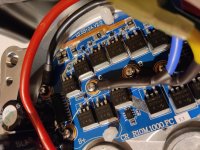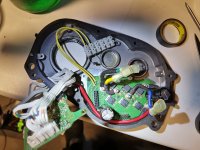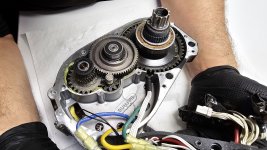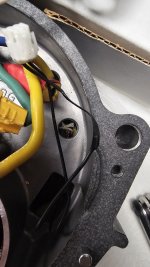2Slow
100 mW
- Joined
- May 23, 2020
- Messages
- 38
tatawaki said:Thanks again for all the help thus far. I've decided to stick with a 52v battery for now. I'm currently running 50amps through it. I've put just over 500km and full throttle all the time and seems stable. I want to run more power (maybe slowly work it up to 60amps). Do you think this the stock controller can handle it?
I've added thermal paste on the backside of the controller to help with heat dissipation
worst case: https://www.greenbikekit.com/accessories/bafang-8fun-spare-parts/ultra-g510-mid-motor-parts/bafang-ultra-510-controller-48v-30amp.html
EDIT: I'm at 54 AMPS and the initial test was fine (very cool outside) rode to work in +11c weather and seems ok. Bike feels better, but I think 3500watts is ideal (60amp) for the weight and size of this bike.
IMG_1500 (1).jpg
Caution, measuring external temps by hand feeling the aluminium diecast case is misleading. The motor stator is isolated to case by airgap most of the way around. So thermal transfer is minimal. Die-cast aluminium is poor heat conductor, comparing to extruded or forged aluminium part. I would say, if you measure temperature rise of 20c between air and case, then at least double that number to get motor stator temperature and triple that number to get wire temperatures as estimates.
Aluminium PCB with heat-transfer paste is wise
:thumb:





